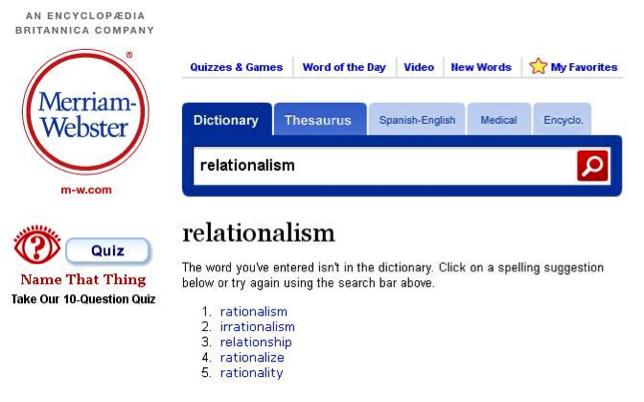A recent book from Martha Bayles, a lecturer in humanities at Boston College, tackles the question of how American entertainment industry products confound official U.S. government efforts to represent the nation to...
KEEP READINGThe CPD Blog is intended to stimulate dialog among scholars and practitioners from around the world in the public diplomacy sphere. The opinions represented here are the authors' own and do not necessarily reflect CPD's views. For blogger guidelines, click here.
Culture Posts: Individualism, Collectivism – and Relationalism
In honor of the New Year (both West and East), I would like to share a relatively new lens for viewing relations in public diplomacy. Many may have heard of the terms individualism, which privileges the individual, and collectivism, which favors the collective or group. What they may not have heard about yet is relationalism, which privileges personal relations. At the time of this writing, relationalism literally “isn’t in the dictionary” – at least the most prominent one in the English-language.

Relationalism is in Wikipedia. However, the entry lacks cultural and communication dimensions as well as the pivotal contributions from female and Asian scholars.
For public diplomacy, relationalism offers a more refined lens for viewing relationships beyond simply “one versus the many” or “two-way communication.” Relationalism may be particularly valuable for understanding the dynamics of networking and collaborative public diplomacy.
Opposing Cultural Perspectives: Individualism & Collectivism
Both individualism and collectivism are in the dictionary. Individualism is of British origin, stemming from the works of Adam Smith and Jeremy Bentham, according to Merriam-Webster. However, Alexis de Tocqueville is often credited with coining the term during his visit to America in 1831. He was trying to describe the American spirit and what distinguished the “new world.” “Individualism is a novel expression, to which a novel idea has given birth,” wrote de Tocqueville. That novel idea was self-reliance, independence, equality, and personal freedom. De Tocqueville entitled his book Democracy in America.
Individualism has been an enduring part of American parlance, and favorably so, given its association with democracy. Perhaps, not surprisingly, collectivism has been less well understood. When contrasted against individualism, the depictions are often less flattering and even antagonistic. Whether it is fighting communists during the Cold War or resisting Borg on Star Trek, the collective is often presented as a threat and even mortal enemy of the individual.

In scholarship, the idea of individualism/collectivism dates back to 1953 and Florence Kluckhohn’s “value orientations.” She described the nuclear family as an individualistic, the extended family as collateral, and the inclusion of ancestors to the family sphere as lineal.
Individualism and collectivism was one of the five dimensions proposed by Dutch social psychologist Geert Hofstede in his landmark study Culture’s Consequence (1980). Hofstede, who was working with IBM at the time, came across a treasure trove of data from different IBM groups in more than 50 countries. He speaks of national cultures and positions countries relative to each other. Hofstede said that individualism prevails in “developed and Western countries,” while collectivism prevails in “less developed and Eastern countries.”
Hofstede often contrasts individualism and collectivism. Features of individualism include: “I”- consciousness; People take care of themselves and immediate family only; Speaking one’s mind is healthy; Personal opinion expected; Others classified as individuals; and Task prevails over relationships.
Features of collectivism include: “We” consciousness; People are born into extended families which protect them in exchange for loyalty; Harmony should always be maintained; Opinions are predetermined by in-group; Others are classified as in-group and out-group; and Relationship prevails over task.
Another social psychologist, Prof. Harry C. Traindis of the University of Illinois also wrote extensively on individualism/collectivism. Traindis focused at the individual or personal level. With the help of his doctoral student, C. Harry Hui, he refined the framework. [1]
Their research highlighted how relationships differ. Individualists tend to value independence and autonomy and favor relationships that are egalitarian and horizontal, such as friendships or marriage. Because the goals of the individual take precedence over the group goals, relations are often voluntary and temporary.
Traindis said collectivism tends to value interdependence and privilege vertical relations such as parent-child, each with different roles and obligations. Relations are often involuntary and long-term. Individuals are willing to forgo personal goals if they conflict with group goals. Distinctions between “in-groups” and “out-groups” are clearly defined. While collectivism strongly encourages cooperation within the in-group, out-groups are looked on with suspicion.
Individualistic Japanese & Collectivist Americans
The individualism-collectivism dimension has been one the most prominent cross-cultural tools within the social sciences. It has been used to analyze cultural differences across a range of phenomena, from advertising appeals to management styles and negotiating strategies.
Part of the dimension’s appeal is its simplicity in providing a powerful explanation for behavioral differences around the world. The individualism-collectivism dimension remains popular. However, scholars who have surveyed the mass of studies over the past three decades are raising red flags.
A team of social psychologists led by Daphna Oyserman at the University of Michigan surveyed studies published between 1980 (the year Hofstede’s book appeared) and 2000. [2] They wanted to see if Americans were the “gold standard” of individualism.
What the scholars found was rather surprising: Americans were no less collectivist than Latin Americans and some Asians. Several studies showed the Americans were more collectivist than the Japanese. The only consistent and robust difference in collectivism was between the Americans and Chinese.
Oyserman and her colleagues blamed the unexpected variations on the different measurement scales. Researchers appeared to have different ideas about what constituted individualism and collectivism.
Even before these literature reviews, other researchers using the same scale found similar anomalies. Triandis’s own research team had to re-think their assumptions. The scholars expected Americans and European to be highly individualistic and Latin Americans and Asians highly collectivist. That was not what they found: “In fact, the “highest score on interdependence was from the Illinois females!” Exclamation point is theirs.
It was not just Triandis who had found American women to be the relational outliers. One of the first studies on collectivism noted a similar gender difference.[3] Another team of researchers in 1995, found that females across five cultures – America, Australia, Hawaii, Korea and Japan -- were all more relationally oriented than their male counterparts.[4]
Scholars also raised flags about the long-held assumptions about group biases. Individualists were also assumed to not make in-group / out-group distinctions. That is a trait of collectivists. Yet, the actual studies revealed that loyalty to the in-group and suspicion of out-groups were just as pronounced, if not more so, in Western cultures than in Asian cultures. [5]
In-group favoritism and out-group suspicion does not seem as shocking when one considers the history of racism and segregation in America, or European colonialism, the Holocaust, and even the current debates over immigration and signs of Islamaphobia in Europe and America. Upon reflection, individualist Americans’ and Europeans’ history of in-group and out-group distinctions seems curiously overlooked.
With the many inconsistencies, one team of scholars suggested that collectivism is a “misnomer.”
The reality may be, as several scholars have suggested, that every society contains elements of individualism and collectivism in order to meet the demands and complexity of social systems.
A Third Dimension
It was not just that individualists were becoming collectivists, or globalism was transforming collectivists into individualists. A growing number of researchers began to suspect there was another dimension. Researchers had overlooked an entire layer of relations.
In the next Culture Post, I will look at some of the research and thinking that fostered the emergence of relationalism and relationalism’s implications for public diplomacy.
- C. Harry Hui and Harry C. Triandis (1986), “Individualism-Collectivism: A Study of Cross-Cultural Researchers,” Journal of Cross-Cultural Psychology, 17(2): 225-248
- Daphna Oyserman, Heather M. Coon, and Markus Kemmelmeier (2002), “Rethinking Individualism and Collectivism: Evaluation of Theoretical Assumptions and Meta-Analyses,” Psychological Bulletin 128 (1), 3-72.
- Kwok Leung and Michael H. Bond (1984), “The Impact of Cultural Collectivism on Reward Allocation,” Journal of Personality and Social Psychology, 47 (4): 793-804.
- Yoshihisa Kashima, Susumu Yamaguchi, Uichol Kim, Sang-Chin Choi, Michele Gelfand, Masaki Yuki (1995). “Culture, Gender, and Self: A Perspective From Individualism-Collectivism Research,” Journal of Personality & Social Psychology 69(5):925-937.
- Marilynn Brewer and Ya-Ru Chen (2007), “Where (Who) Are Collectives in Collectivism? Toward Conceptual Clarification of Individualism and Collectivism,” Psychological Review, 114 (1): 133-151.
Visit CPD's Online Library
Explore CPD's vast online database featuring the latest books, articles, speeches and information on international organizations dedicated to public diplomacy.
POPULAR ARTICLES
-
November 21
-
November 7
-
November 5
-
November 21
-
December 4
Join the Conversation
Interested in contributing to the CPD Blog? We welcome your posts. Read our guidelines and find out how you can submit blogs and photo essays >.













